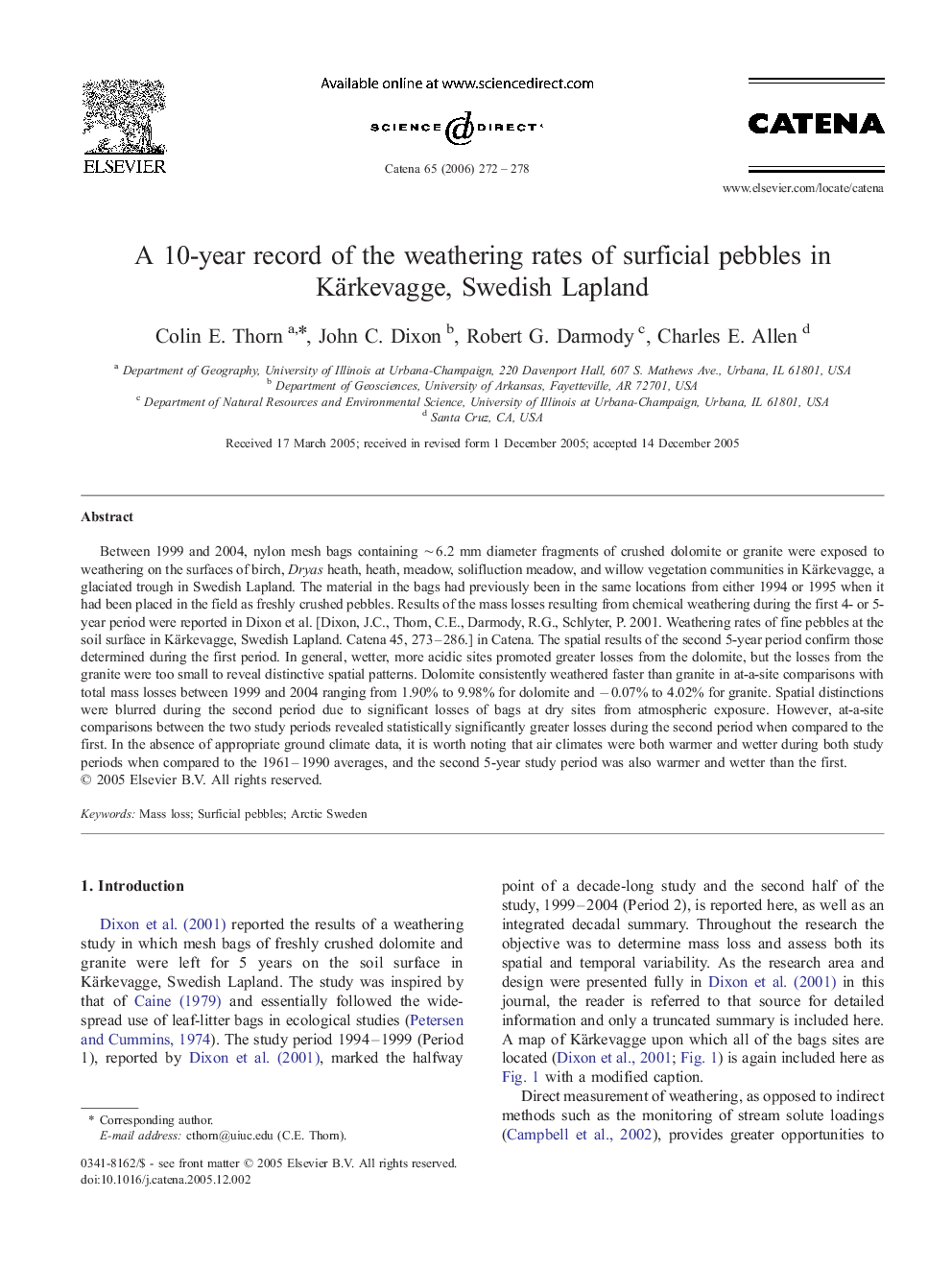| Article ID | Journal | Published Year | Pages | File Type |
|---|---|---|---|---|
| 4572756 | CATENA | 2006 | 7 Pages |
Between 1999 and 2004, nylon mesh bags containing ∼ 6.2 mm diameter fragments of crushed dolomite or granite were exposed to weathering on the surfaces of birch, Dryas heath, heath, meadow, solifluction meadow, and willow vegetation communities in Kärkevagge, a glaciated trough in Swedish Lapland. The material in the bags had previously been in the same locations from either 1994 or 1995 when it had been placed in the field as freshly crushed pebbles. Results of the mass losses resulting from chemical weathering during the first 4- or 5-year period were reported in Dixon et al. [Dixon, J.C., Thorn, C.E., Darmody, R.G., Schlyter, P. 2001. Weathering rates of fine pebbles at the soil surface in Kärkevagge, Swedish Lapland. Catena 45, 273–286.] in Catena. The spatial results of the second 5-year period confirm those determined during the first period. In general, wetter, more acidic sites promoted greater losses from the dolomite, but the losses from the granite were too small to reveal distinctive spatial patterns. Dolomite consistently weathered faster than granite in at-a-site comparisons with total mass losses between 1999 and 2004 ranging from 1.90% to 9.98% for dolomite and − 0.07% to 4.02% for granite. Spatial distinctions were blurred during the second period due to significant losses of bags at dry sites from atmospheric exposure. However, at-a-site comparisons between the two study periods revealed statistically significantly greater losses during the second period when compared to the first. In the absence of appropriate ground climate data, it is worth noting that air climates were both warmer and wetter during both study periods when compared to the 1961–1990 averages, and the second 5-year study period was also warmer and wetter than the first.
